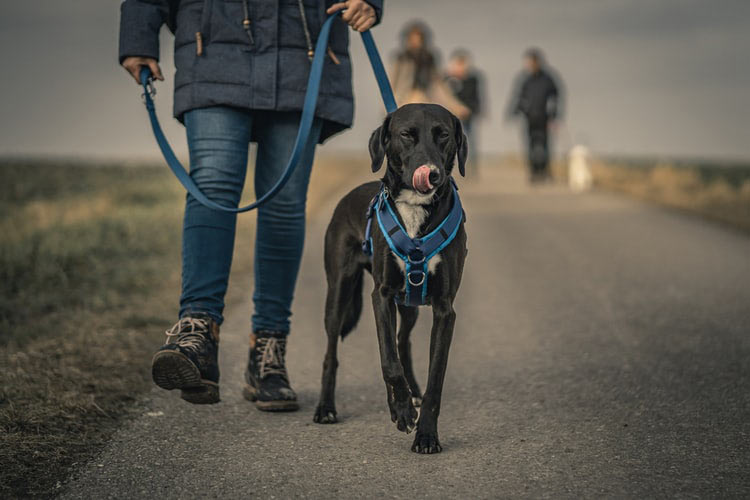
What is MMP Surgery for dogs?
We all want our dogs to live long, healthy and fulfilling lives. And sometimes that means your dog may tear his CCL after chasing a squirrel and require MMP surgery. The Modified Maguet Procedure is a minimally invasive procedure used to repair a ruptured or torn cranial cruciate ligament (CCL) in your dog’s knee joint.
MMP for dogs is based on a surgical technique for human knees that an orthopedic surgeon named Dr. Maguet developed over 50 years ago.
MMP surgery helps compensate for the dog’s injured cruciate ligament (CCL) by redirecting the impact of the quadriceps muscles. This procedure helps the patellar tendon take over and act like a new ACL/CCL tendon. One of the goals of the Modified Maquet Procedure is to change the angle of the tibia (one of the bones between the knees and ankles) and move it forward so that it is 90 degrees to the patellar tendon. An Orthofoam implant provides stability as well as promotes healing and accelerated bone growth.
Why would a dog need MMP surgery?
The MMP surgery is used to treat pain, immobility, prevent crippling arthritis, and to treat CCL injuries in dogs, which are unfortunately very common. According to the Journal of the American Animal Hospital Association, “Modified Maquet procedure appears to be an effective treatment for lameness due to failure of the cranial cruciate ligament in dogs [1].”
Dog CCL Injury Symptoms

When a person tears their ACL, it typically happens immediately after jumping or twisting or some other sudden trauma. But when a dog tears his or her CCL, it happens gradually over time and gets worse with continued use.
The following signs may mean your dog has an injured CCL:
- Your dog is limping
- Lameness in hind legs
- Your dog favors the opposite leg
- You dog’s gait (the way they walk) changes
Talk with your vet to determine optimal treatment options if your furry friend has any of the above symptoms.
MMP Surgery VS. TPLO for Dogs
A TPLO surgery involves cutting, rotating and changing the position of the tibia bone. Bone plates and screws hold the bone graft in place. Giant and large dog breeds are usually candidates for this procedure.
There are a few reasons why your veterinarian may recommend the Modified Maguet Procedure over TPLO surgery for your dog. Although every case is different, the MMP surgery is typically far less invasive than TPLO, requiring one cut in the bone instead of three. As a result, MMP recovery time is significantly faster (four to six weeks instead of ten to twelve weeks for TPLO recovery).
MMP is usually less expensive than TPLO because the surgery takes less time to perform. Dr. Roger Welton states:
“I am enjoying quicker return to function, by far faster recovery times, and excellent results with the MMP procedure for repair of the CCL in dogs that I have been performing the surgery for. The standard TTA and TPLO remain good procedures especially in the hands of an experienced veterinary surgeon, but in my view, MMP is currently the best CCL repair procedure for dogs over 38 pounds that have suffered CCL tears.”
Dog MMP Surgery Cost
Your veterinarian will usually quote you a range when you’re researching MMP surgery cost for dogs. This is because every dog is unique and until the surgeon performs the surgery, they don’t know how long it will take or if complications will arise. Plus, large and giant dogs require more anesthesia than smaller dogs because anesthesia is given based on weight [2].
MMP surgery costs will also vary depending on your location. Surgery in New York City and California is going to cost more than in rural North Carolina.
MMP Surgery Complications

Any surgery carries risks, such as infections that can be treated with antibiotics. Do your due diligence and talk with your vet about the best way to keep your furry friend safe during and post-surgery.
Minor MMP surgery complications include bruising and swelling that goes away on its own within a few days.
“Although MMP is a major surgical undertaking, most dogs (more than 75%) will return to previous levels of unrestricted athletic activity and function without encountering any significant complications [3],” according to Hilton Vet Hospital in Australia.
Less than 2% of dogs fracture their opposite tibia after MMP.
MMP Recovery
As with all dog knee injuries, your dog needs plenty of rest and limited physical activity during MMP recovery. Make sure your dog does not have access to stairs. Prevent them from running and jumping (even inside your home).
Walk your dog on a leash (to prevent running, jumping and reinjury) for the first two weeks post-surgery.
Within 2 days : your dog should be able to put some weight on the post-operative leg while walking.
After 14 days: the sutures are removed. Take your dog on slow leash walks for 5 to 10 minutes, up to eight times each day. Your dog should be using his post-operative leg with every step at this point.
After 3 to 4 weeks: Gradually increase your dog’s activity, while still keeping him or her on a leash. You can take your dog on longer walks by the fourth week.
After 5 to 6 weeks: X-rays will confirm that everything is healing according to plan. Continue to gradually increase your dog’s activity. By now, he or she can take walks for up to 30 minutes in grassy areas. You can let your dog off-leash for 5 minutes during your last walk of the day as long as no other dogs are present.
By twelve weeks: your dog should be able to resume their normal (pre-injury) activity levels.
Sources:
- https://jaaha.org/doi/abs/10.5326/JAAHA-MS-6304?mobileUi=0&journalCode=aaha
- https://anesthesiology.pubs.asahq.org/article.aspx?articleid=1946779
- https://hiltonvethospital.com.au/wp-content/uploads/2019/04/MMP-for-Owners.pdf
- https://www.mdpi.com/2306-7381/6/1/18
- https://www.maybeckvet.com/services/dogs/blog/why-choose-mmp-over-tplo-cranial-cruciate-ligament-tear-dog-knee
- https://www.ncbi.nlm.nih.gov/pmc/articles/PMC4243374/
- https://www.warrenanimalclinic.com/mmp.html
- https://dogkneeinjury.com/tto-mmp-surgery/